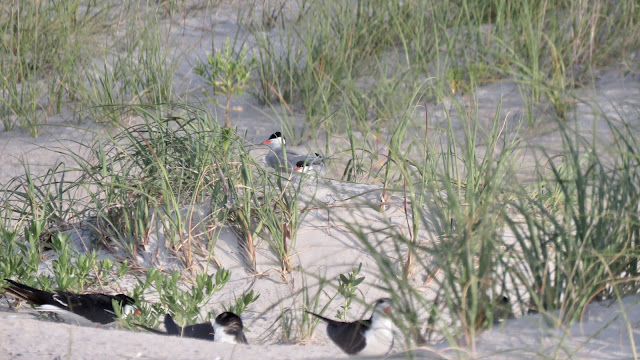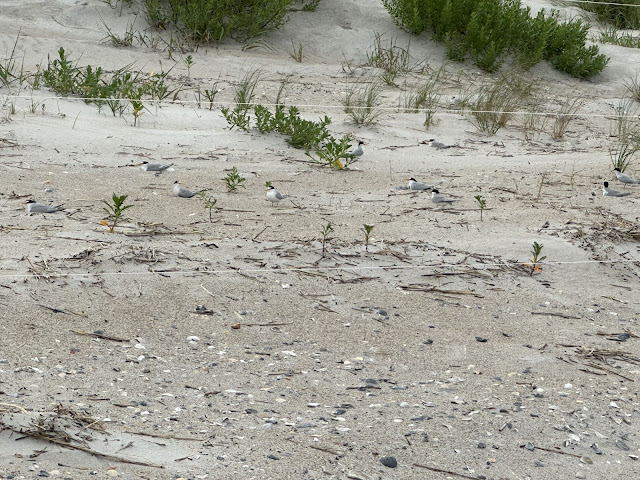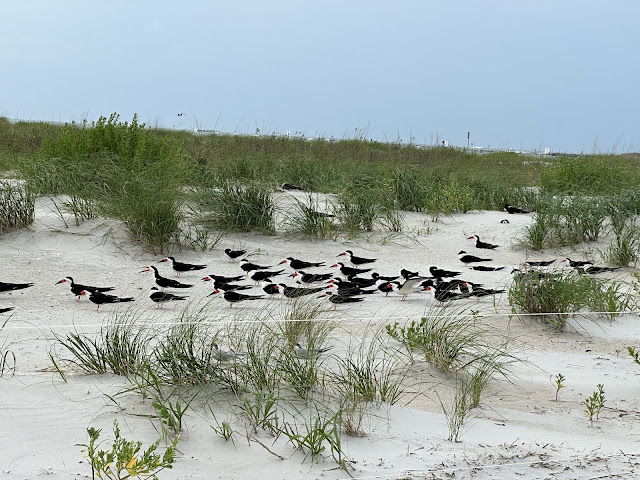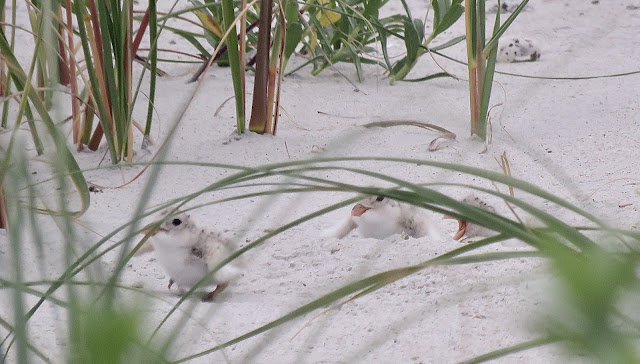 |
| photo by Kathy Hannah |
We have good news and bad news with this update…
NEST CHECK NUMBERS…Lindsay, our NC Audubon biologist, was able to do a nest check the morning of 5/30 and we have some very disappointing numbers.
LEAST TERNS (LETE)
The Least Terns disappeared over the stormy holiday weekend. The weather probably played a large role, as they were in an exposed area and unless they are able to sit tight on their nests, they are easily blown over. Any flushing of the adults would also leave them vulnerable to predators like ghost crabs and Ruddy Turnstones. We do not have any Least Terns nesting at this time.
COMMON TERNS (COTE)
Common Tern chicks can be seen on top of the dunes ocean (east) side and on the inlet (west) side. We have about 4 Common Tern nests throughout the posting and we have seen just a couple of chicks.
 |
| photo by Monica Ramanathan |
 |
| photo by Tom Hanna |
 |
| photo by Tom Hanna |
 |
| photo by Tom Hanna |
BLACK SKIMMERS (BLSK)
Lindsay counted 52 Black Skimmer nests that have been depredated by Ruddy Turnstones and only 2 active nests remain. Three chicks were seen on the inlet side in one nest on Sunday and Monday on top of the dune; however, they were not there today.
 |
| photo by Kathy Hannah |
 |
| photo by Maxine Hannah |
 |
| photo by Kathy Hannah |
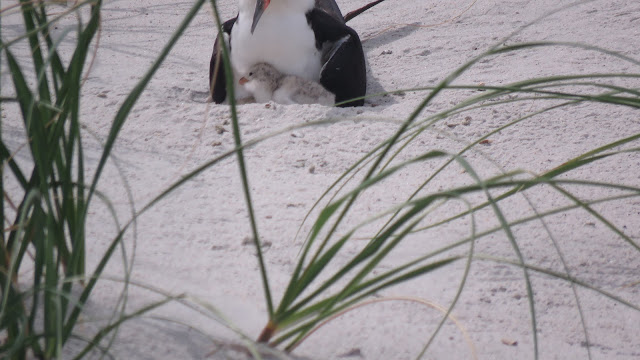 |
| photo by Kathy Hannah |
 |
| photo by Kathy Hannah |
We observed a few Black Skimmer pairs doing fish presentations and mating activity, which are signs of re-nesting to come, but most of the Black Skimmers gathered together on the inlet side of the posting appear to be grieving.
AMERICAN OYSTERCATCHERS (AMOY)
GOOD NEWS! We have two Oystercatcher pairs with chicks!!
The first pair (unbanded and banded EMY) are feeding two chicks on the inlet (west) side of the posting. The oystercatcher family is so adorable and the parents work together so well.
The second pair is on the ocean (east) side. On 5/30 at 10:30 am, the pair that are both banded (CT4 and CF0) were seen. One parent was seen trying to encourage the chick to follow it to the water’s edge.
The banded pair were seen together on the ocean (east) side of the nesting colony that same afternoon. Bird Steward Steve Haley was able to get photos! This pair has not raised a chick in a few years, but hopefully they will succeed this year.
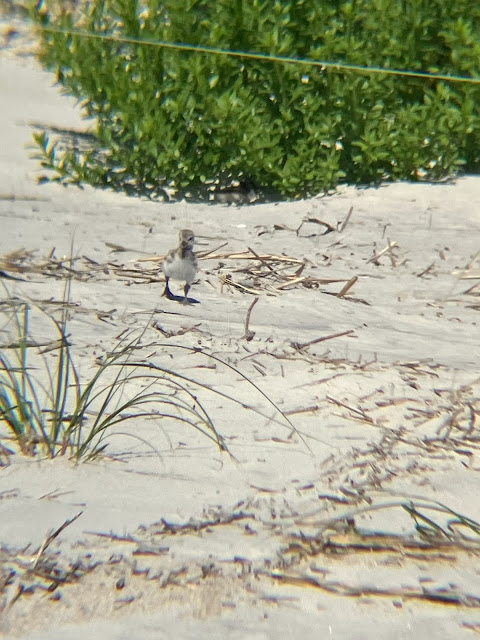 |
| photo by Steve Haley |
 |
| photo by Steve Haley |
WHAT DO THE CHICKS NEED?
One of the biggest threats to nesting birds is disturbance by people. When parents are disturbed, they are separated from their eggs or chicks and prevented from taking care of them. This can lead to heat stress, predation, or other harm!
So what is disturbance?? It’s any activity that interrupts what the birds were doing before…
- getting too close to take photos,
- walking through a flock,
- flying a kite over the colony,
- standing too close,
- moving around too much (especially moving directly towards them rather than diagonally),
- standing between the birds and the water so that the parent birds will not escort their chick to the water
As it warms up, parent birds work hard to get their chicks to the water to drink and cool their bodies.
Please stop at a safe distance and enjoy this unique opportunity to see this behavior…
We want each of you to enjoy these priceless moments!



























